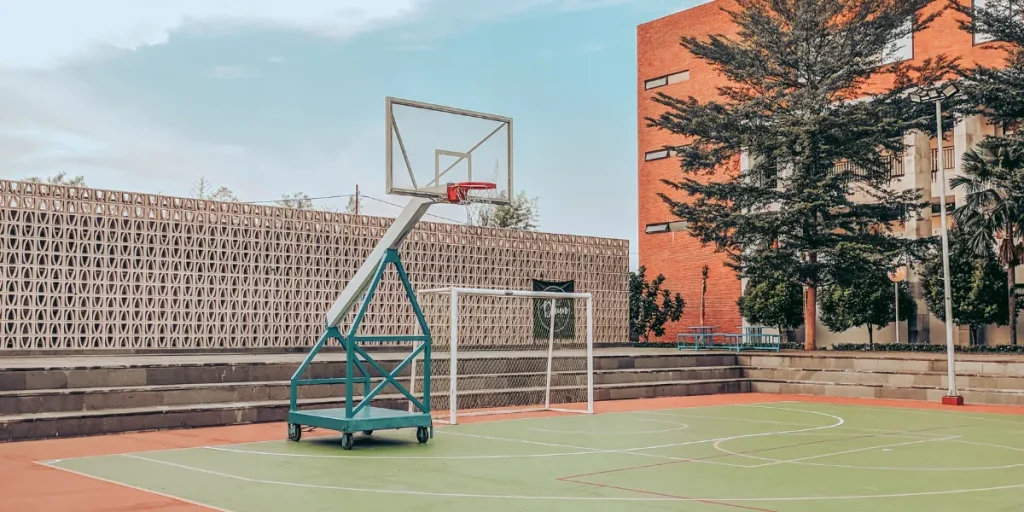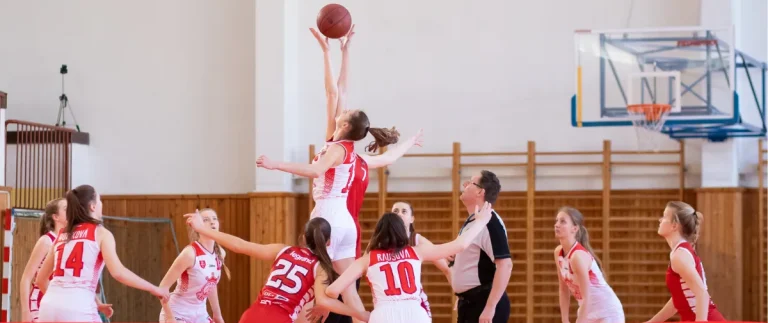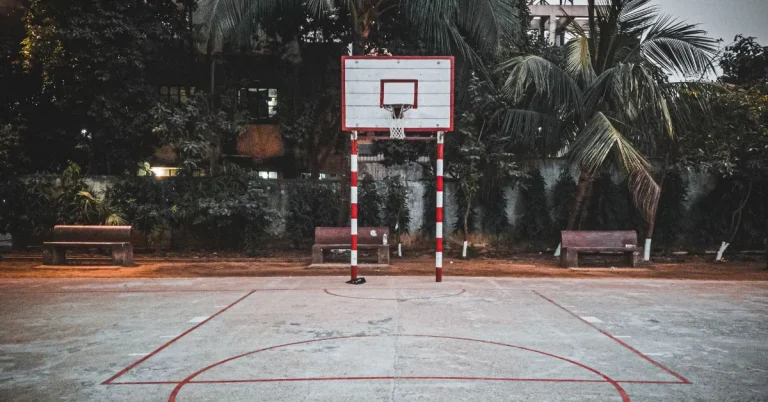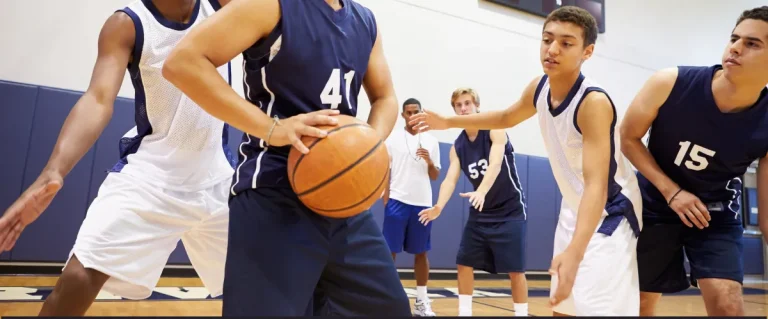How to Disassemble a Portable Basketball Hoop?
Looking to disassemble portable basketball hoop for storage or transport? Our comprehensive guide provides step-by-step instructions for hassle-free breakdown. Whether you need to pack it away for the winter or move it to a new location, learn how to dismantle your basketball hoop efficiently with our expert tips. From removing the backboard to disassembling the pole sections, we’ve got you covered every step of the way.
Preparations for Disassembling the Hoop
Before you start taking apart the basketball hoop, make sure you have all the tools you will need nearby. You will probably need things like wrenches, screwdrivers, pliers, and maybe even a rubber mallet for parts that are stuck. Having these tools ready will make the job easier and stop you from having to pause to find something you forgot.
Choose a spacious, well-lit area with a flat surface to lay out parts neatly. Prioritize safety: wear gloves and safety glasses, clear the area, and be cautious with heavy pieces. Ask for help if needed.
Step-by-Step Guide Disassemble Basketball Hoop
Ready to take down your basketball hoop? Follow this ultimate guide for a hassle-free disassembly.

Removing the Backboard
When beginning the disassembly process, your first step is to focus on removing the backboard. Begin by identifying any bolts or screws that secure the backboard to the support pole. Using a wrench or screwdriver, carefully loosen and remove these fasteners, taking care not to damage the backboard in the process. Once the fasteners are removed, gently lower the backboard to the ground, ensuring to support it adequately to prevent any accidental damage.
Basketball Net Removal and Rim
Next, turn your attention to detaching the rim and net from the backboard. Locate the bolts or screws that secure the rim to the backboard, and use the appropriate tool to loosen and remove them. Take care to handle the rim and net delicately to avoid any damage. Once the rim is detached, carefully lower it to the ground, ensuring that both the rim and net remain intact throughout the process.
Removing the Pole
If your basketball hoop features a multi-section pole, your next step is to disassemble these sections. Begin by identifying any connection points between the sections, such as bolts or locking mechanisms. Using the necessary tools, carefully loosen and disassemble these connections, taking care not to damage any of the components. Work systematically to separate the pole sections safely and efficiently.
Breaking Down the Base
Moving on, focus on breaking down the base of the basketball hoop. If the base is filled with sand or water, start by draining or removing the filling to reduce its weight. Next, identify any bolts or screws that attach the base to the support pole or other components. Use your wrench or screwdriver to loosen and remove these fasteners, ensuring to handle the base with care throughout the process. Once detached, carefully move the base to its designated storage area.
Handling Small Components
After disassembling a portable basketball hoop, ensure proper storage to maintain the parts’ organization and condition. Store smaller components, such as bolts and screws, in labeled containers or bags. For larger parts like the backboard, rim, pole, and base, find a clean and dry area away from excessive moisture and extreme temperatures. Take precautions to protect fragile parts, like the backboard, from potential damage.
Safety Precautions
When disassembling a portable basketball hoop, it’s essential to prioritize safety. Here are some key safety precautions to keep in mind:
- Wear appropriate safety gear, such as gloves and safety glasses, to protect yourself from potential injuries.
- Follow the manufacturer’s instructions and guidelines for disassembly to ensure proper handling of the equipment.
- Use caution when lifting heavy parts, like the backboard or pole, and get assistance if needed to prevent strain or accidents.
- Store any small parts or tools in a secure location to avoid the risk of tripping over or losing them.
- Keep children and pets away from the disassembled parts and work area to prevent accidents.
By following these safety precautions, you can ensure a smooth and safe disassembly process for your portable basketball hoop.
Common Issues and Troubleshooting
Here are some common issues you may encounter during the disassembly of a portable basketball hoop, along with troubleshooting tips:
Stuck Screws: If you encounter bolts or screws that are difficult to loosen, try applying a penetrating oil or lubricant to help loosen the stuck fasteners. Give it some time to penetrate before attempting to remove them. Secondly, using a wrench with a longer handle or applying gentle heat from a hairdryer can help break the rust or corrosion that may be causing the resistance.
Misplaced Parts: Double-check all the parts and components of the basketball hoop during disassembly to ensure that nothing is left behind or misplaced. If you’re missing any essential parts, check with the manufacturer to inquire about replacements or alternative solutions.
Unclear Instructions: If you find the instructions provided with the basketball hoop unclear or if you are unfamiliar with the specific model, consider searching for online resources. Look for videos or tutorials specific to your hoop model that can provide visual guidance and clarification. Reaching out to the manufacturer’s customer support for assistance or seeking advice from online forums or communities dedicated to basketball hoops can be helpful.
Cracks During Disassembly: Take your time and handle the parts with care to avoid any accidental damage or cracks. If you notice any damage or cracks on the backboard, rim, or other components during disassembly, assess the severity. Minor cosmetic issues may not affect functionality, but structural damage should be addressed with the manufacturer for repair or replacement options.
Examine the Types of Base
- Water-Filled Base: Made of high-density polyethylene, filled with water for stability and convenience.
- Sand-Filled Base: Also made of high-density polyethylene, filled with sand for increased stability during play.
- Gel-Filled Base: Contains a gel-like substance for excellent stability and vibration absorption.
- Hybrid Base: Offers flexibility with separate compartments for water and sand filling.
Consider factors such as weight, convenience, stability, and transportation when choosing a base for your portable basketball hoop.
FAQs
How do you separate a basketball hoop?
To dismantle your basketball hoop, follow these steps. Begin by unscrewing the bolts or screws to remove the rim and net. Next, disconnect the backboard from the support pole by removing the bolts or screws. Finally, loosen the attachment point to detach the support pole from the base.
How do you store a portable basketball hoop?
Disassemble basketball hoop as per instructions, clean, and store the components. Use labeled containers for small parts, find a secure space for larger ones, and wrap fragile parts. Keep everything organized for future reassembly.
How do you fix a basketball hoop?
Maintain your basketball hoop by identifying issues, tightening bolts, checking stability, and contacting the manufacturer for significant damage. Follow the instructions for guidance.
Conclusion
Disassembling portable basketball hoop and storing it requires careful attention to detail and following the manufacturer’s instructions. By following the appropriate steps, you can safely separate the components of the hoop and store them properly to maintain their condition. Moreover, troubleshooting common issues and taking necessary safety precautions contribute to the longevity and functionality of the basketball hoop.

Passionate basketball player striving for excellence on and off the court. Dedicated to the game since youth, I have honed skills through years of practice. Explore my journey, gear reviews, and dunking tips. Let’s elevate our game together!







